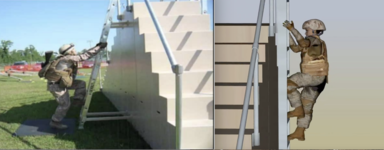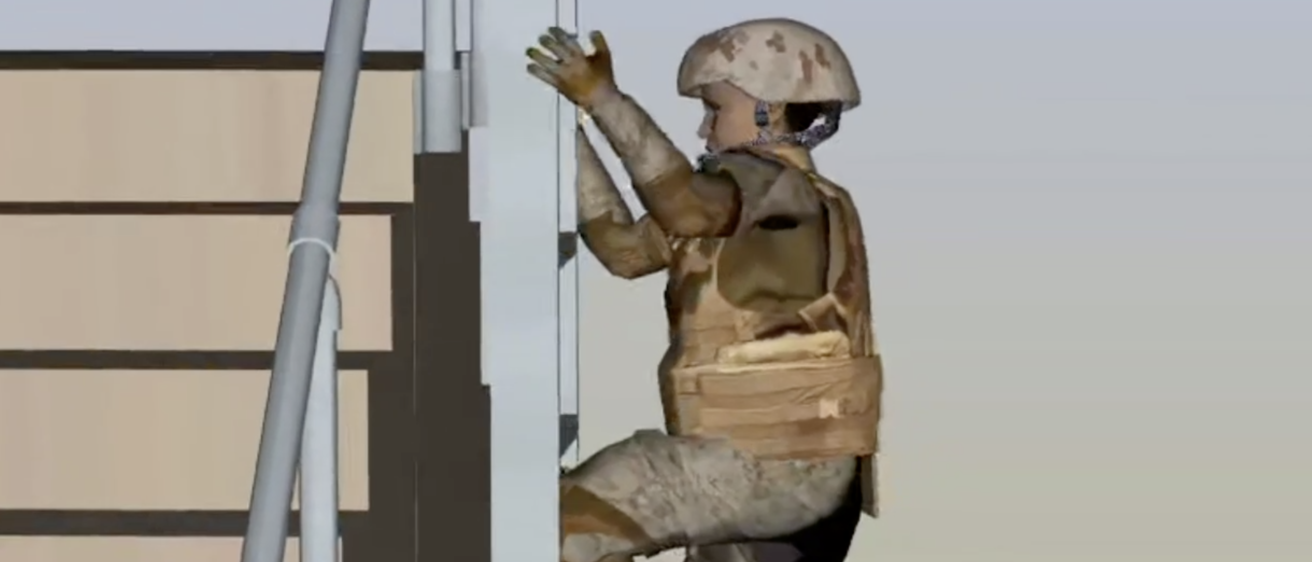Virtual event on Aug. 12 to examine how a ‘digital twin’ can reduce injuries through better designed female body armor
Pressure to design modern, properly fitting body armor and personal protective equipment (PPE) for women is mounting as more women serve in the military, law enforcement, construction, and other dangerous professions.
“For too long, PPE came in ‘one size fits most’ and typically was designed for the average male,” says Travis Klopfenstein, University of Iowa Technology Institute (ITI) executive director for programs. “Performing strenuous and mission-critical tasks with ill-fitting PPE can lead to significant discomfort, pain, and injury.”
A bipartisan coalition of lawmakers is pushing for federal action to address the PPE gap, but analysis of the problem is limited, and testing and validating new designs could still take years.
Solutions lie in the virtual world where a digital twin – an accurate human representation in the form of a virtual model – allows testing to occur more quickly and at a lower cost than the traditional approach of manufacturing prototypes to identify flaws. ITI has mature technology that can help improve the fit and performance of female PPE such as body armor, Klopfenstein says.
ITI is contributing to the solution and is leveraging its expertise and leadership in human modeling and simulation to convene national stakeholders from academia, the U.S. Department of Defense (DoD), and industry to examine how to respond to the need for properly fitting female body armor.
ITI is hosting the first annual Iowa Virtual Human Summit from 7:30 to noon (CT), Aug. 12 to examine “Using Digital Twins in Modeling & Simulation to Improve Female Body Armor.” Registration is still open for the free virtual event.
Among the speakers:
- A representative from the U.S. Army’s Synthetic Training Environment (STE) Cross Functional Team will highlight the importance of high-fidelity, non-scripted soldier avatars.
- A representative from U.S. Army Program Executive Office (PEO) Soldier, which is responsible for fielding body armor, will share their team’s latest work.
- The Department of Homeland Security (DHS) will present their work on body armor for female law enforcement officers.
- Sen. Joni Ernst (Iowa), who chairs the Armed Services Committee Emerging Threats and Capabilities Subcommittee and has pushed the legislation, will provide her perspective as a female combat veteran. Representatives from both political parties are expected to attend.

ITI has a track record of analyzing the stress equipment puts on female and male soldiers. Working with the U.S. Marine Corps, UI researchers found the rigid nature of an armor plate and a plate-carrying vest better fit male torsos than female torsos and joint toques and stress differ between males and females.
“ITI has had significant expertise in human modeling and simulation addressing armor design, testing, and evaluation for quite some time,” says ITI Director Karim Malek, a professor of biomedical engineering and a world-renowned expert in human modeling and simulation. “We've worked with at least three companies that design and manufacture armor, as well as three or four entities within the U.S. Army, the U.S. Marines, and Special Forces that are assessing armor. You can save a lot of time and money if you use simulation in order to solve your problems before you actually cut metal.”
ITI has Sophia, who is the only known digital twin for a female soldier. Sophia is a biomechanically accurate, validated, physics-based female avatar enabling the design, testing, and evaluation of equipment for females. Sophia and companion Santos were invented at ITI's Virtual Soldier Research (VSR) Program, which is directed by Malek and has grown as a result of $60 million in external research and development investment. VSR combines the disciplines of computer science, computer graphics, physiology, engineering, biomechanics, robotics, artificial intelligence, and optimization.
“You want to protect the soldier, but at the same time you want them to be able to maneuver and move, so we came in to evaluate the various options in the design process,” Malek says of past tests of human response to body armor for upper and lower extremities. “People come up with many options: steel, ceramics, carbon fiber, you name it, and all of these options are great, but you have to have a way to test all those options. They have to undergo every task that the soldier does.”
Klopfenstein, an Air Force veteran, explains further.
“We have physics-based 3D models of every piece of warfighting gear for female Marines – helmets, body armor, weaponry, rucksacks, boots, etc.,” he says. “This enables us to outfit a Marine and then try out various armor design concepts during specific warfighting tasks and provide the U.S. Military with the results of these tests. Changing the digital twin Sophia from a specific size, strength, and build enables us to investigate the various ways of executing tasks and mission effectiveness.”
The University of Iowa Technology Institute is a world-class research organization founded in 1981. Comprising a multi-disciplinary team of scholars, scientists, and engineers, ITI supports more than 25 laboratories and centers and focuses its research into seven mission areas: Aerospace Technology, Environment and Energy, Biotechnology, Systems and Sensors, Human Modeling and Simulation, Advanced Manufacturing and Materials, and Vehicle Safety and Automated Driving.
